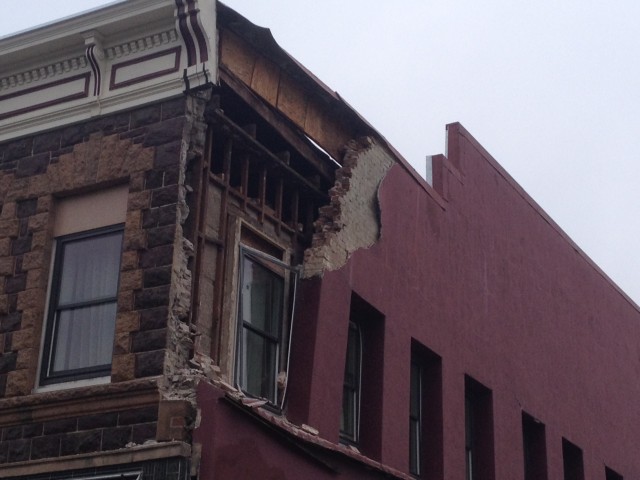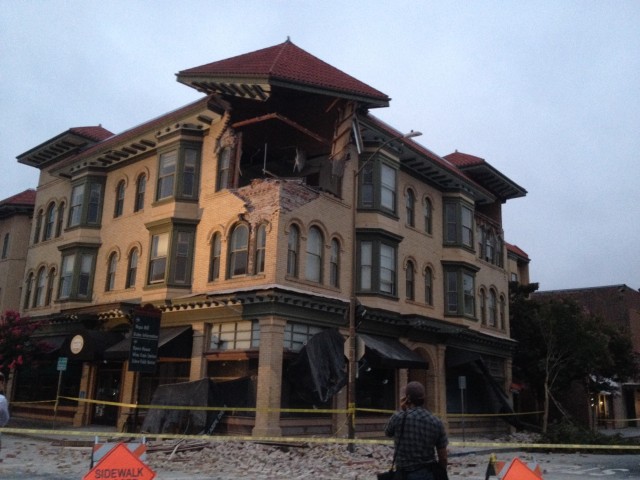
By Jeremy Raff and Tara Siler
Napa’s historic buildings were supposed to have been retrofitted by 2009. So why did Sunday’s quake make heaps of brick and mortar of those charming downtown facades?
Since the 1980s, most of the historic buildings on the state’s retrofit list have been updated. Still, “we have seven to eight thousand buildings to go,” said Emir Macari, a member of the California Seismic Safety Commission and professor of seismic engineering at Cal State Sacramento. “The enforcement is the part that has been lacking.”
Six of Napa’s 18 historic buildings have not been retrofitted; three have no timeline for completion.
But reinforcing them is not a silver bullet. “Retrofitting is actually meant to prevent the loss of life inside the structure, not to prevent [all] damage,” said Macari. “The pictures we’ve seen are what we can expect in this magnitude earthquake. Perhaps those that were not retrofitted are the ones that are seeing more casualties.”
